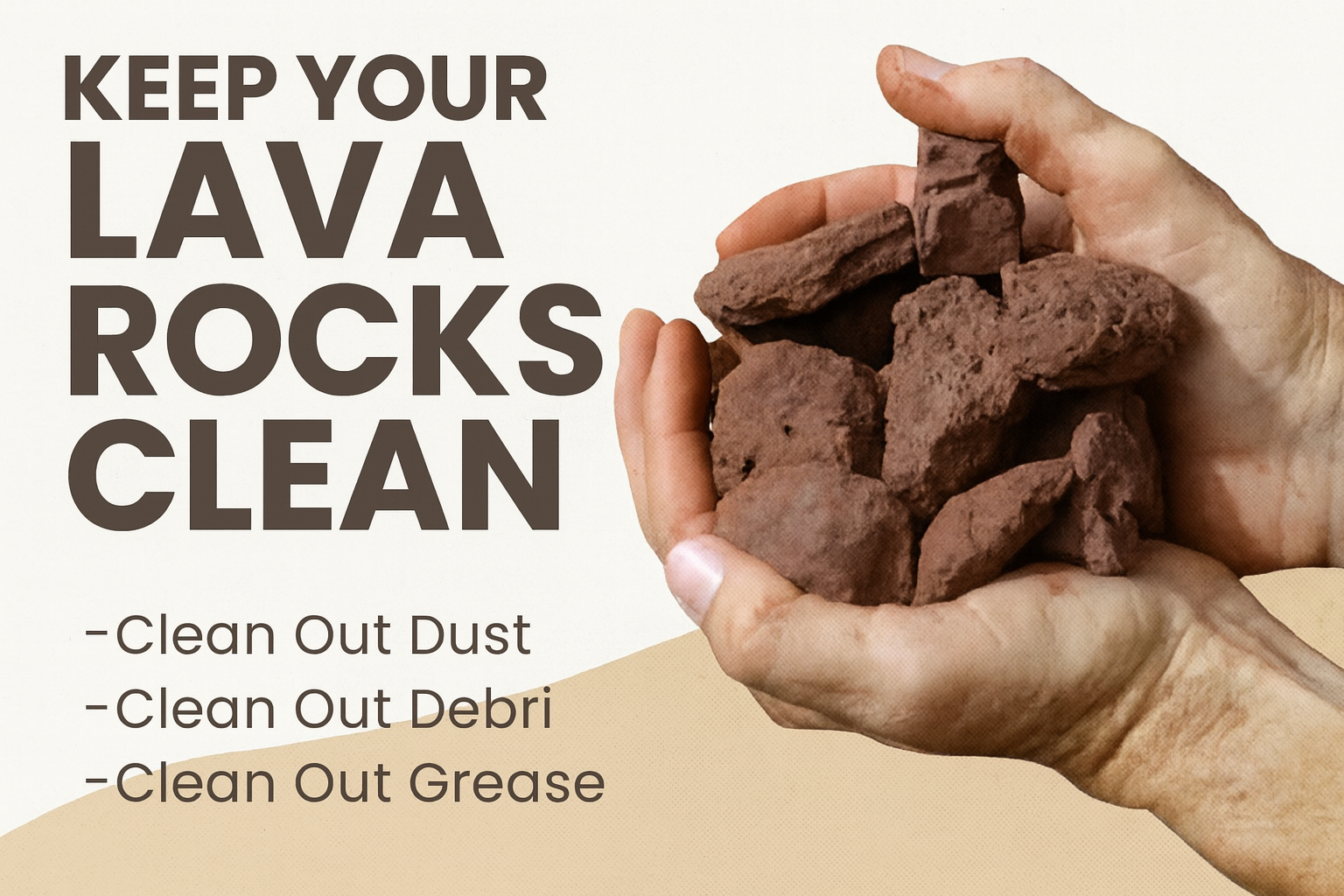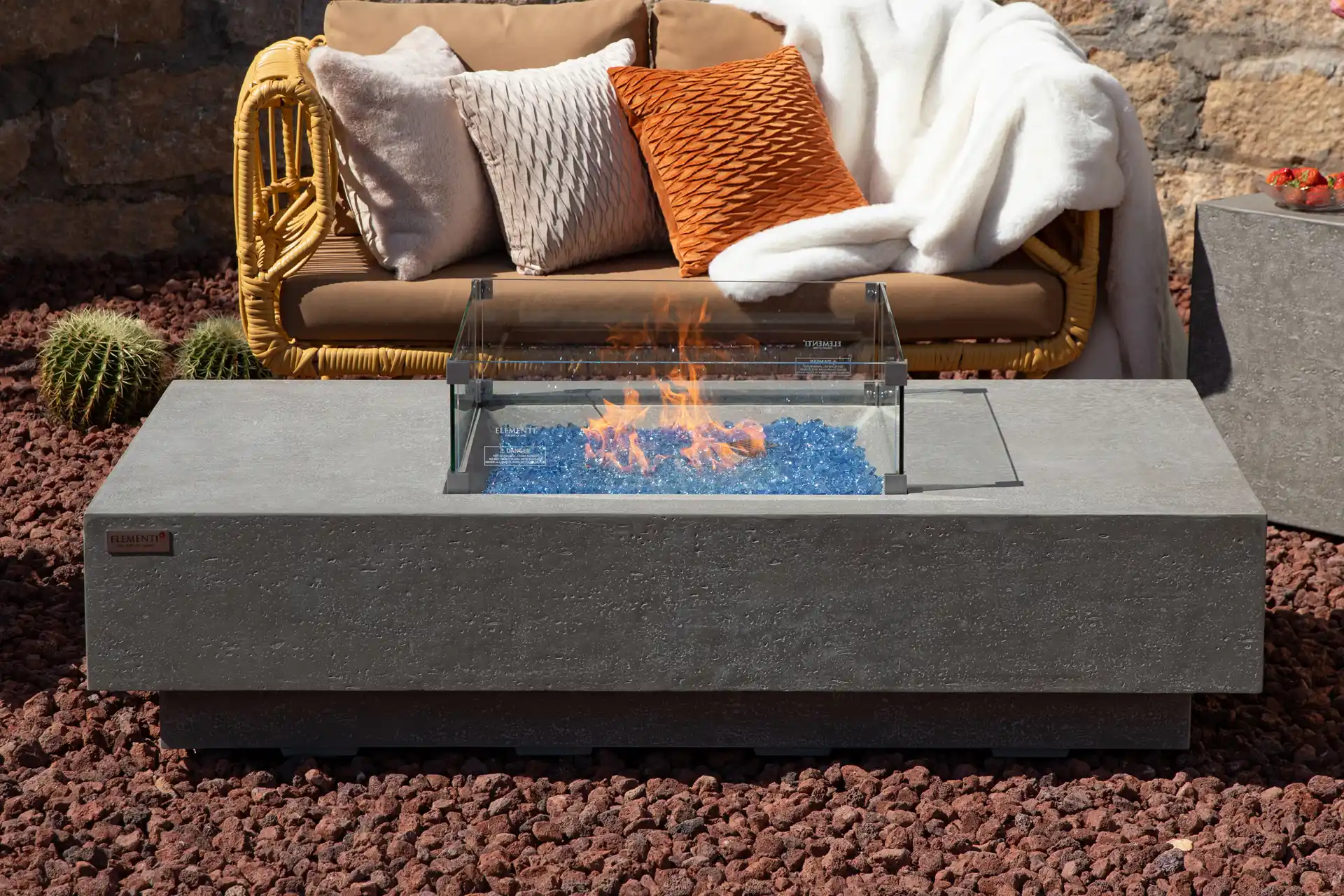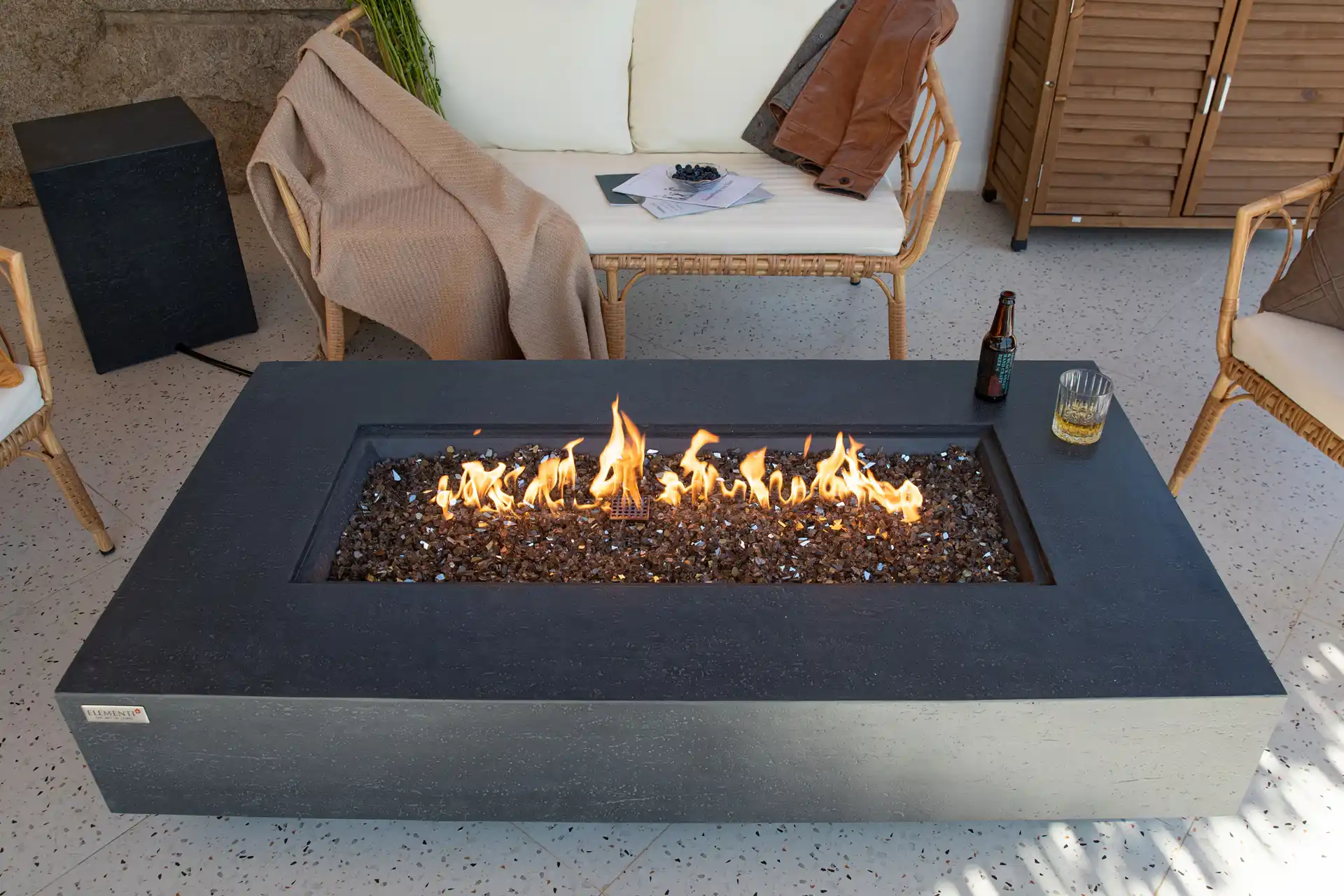Practical tricks for every season: with the right routines, you can use your gas fire safely and conveniently – whether for romantic evenings, cocoa with the kids or a relaxed neighborhood get-together.
1 Basics: types & safe use
There are roughly two types of fireplaces: gas (propane/natural gas) and wood. Gas is fast, clean and easy to regulate; wood offers the classic campfire feeling, but requires more preparation and care. An in-depth comparison: gas vs. wood fire pit.
2 Lighting a gas fireplace correctly
Step 1: Open the gas valve only slightly at first.
Step 2: Start with button ignition according to instructions; without button ignition use a long lighter and keep hands away from the burner.
Step 3: First let the flame burn for 1-2 minutes, then increase the power.
Step 4: Never leave the fire unattended.
Step 5: After use, close the gas valve and wait for it to go out completely.
🔎 More about the structure, burner design and BTU output: Gas fireplace – how it works, advantages & selection.
3 Wood fire pit: material & structure
Required: Tinder (dry leaves/pine cones/chips), kindling (small to medium dry branches), dry firewood, long lighter or matches.
Structure (simple & reliable): Lay two logs parallel as a base → second layer crosswise on top (grid shape) → third layer crosswise again. Put
🤔 Unsure whether wood or gas is better? Read the gas vs. wood fireplace comparison.
4 3 applications that you will love
1) Scent & insect repellent: Add herbs such as sage, lemon balm, rosemary, eucalyptus to the fire – pleasant scent and less mosquitoes without aggressive chemicals.
2) Heat protection with sand: A thin layer of sand in the boiler acts as a buffer, reduces heat build-up and can protect the material.
3) From fire to grill: First create embers, then place a suitable grill grate on top – for burgers, sausages, vegetables with a real wood fire aroma. Only burn natural hardwood, not treated wood.
5 Finding the right grill grate
📏 How big should your fire pit be? Our fire bowl size guide helps with diameter, seating distance and area planning.
Measure exactly (inside dimension or support edges). The grate should be slightly larger than the measurement so that it rests securely. Note the shape: Round to round, square to square – to avoid tilting and uneven cooking. You can find useful accessories here: Fireplace accessories.
6 Avoid rust: Care made easy
- Keep clean: Dirt/ash bind moisture → rust.
- Covering: Suitable cover/protective cover against rain/snow/wind.
- Heat shield: Sand or lava stone protects metal surfaces.
- Oiling: Apply a thin layer of oil after cleaning.
- Inspection: Remove flash rust with a wire brush, touch up with heat-resistant rust protection paint.
7 Should I cover my fireplace?
Yes, absolutely – dry metal surfaces rust the least. Store portable models in
8 Lava stones: clean & extend service life
Why lava stone? Distributes heat, protects metal, absorbs moisture, looks good. Clean regularly: Soak in water (with a little washing-up liquid if greasy), then rinse thoroughly and leave to dry completely. If stones become crumbly, please replace them.

9 Keep wood fires longer & more stable
- Wood selection: Dry hardwood, larger pieces burn hotter & cleaner.
- Reduce wind: Choose a slightly sheltered location → less flying sparks, better stability.
- “Tent” stacking: Place the wood in an airy position so that oxygen can reach all sides.
- Topping up: Small quantities and regularly instead of rare large pieces.
10 Extinguish wood fires safely
Allow to burn out naturally or, if necessary, pour sand/water/ash over embers and stir with a non-flammable stick until there are no more embers. Keep fire extinguisher/blanket ready for emergencies; do not cover until completely cooled down.
⚙️ For long-term care and spare parts: Discover fireplace accessories.
11 Conclusion
Care, protection, routine – to keep your fire pit beautiful, safe and ready for use. With a few simple habits (cover, clean, light/extinguish correctly), your fire pit will accompany you for many seasons.











